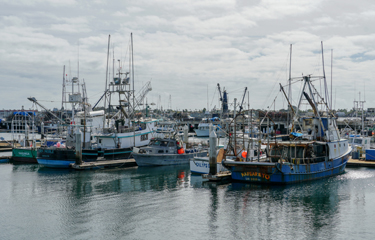The United States Supreme Court on Monday, 24 June issued a decision likely to result in lower insurance premiums for U.S. fishing vessels.
The court ruled in favor of the defendant in the case Dutra v. Batterton. The plaintiff, a seaman employed by Dutra Group, who was injured when a hatch on a dredge vessel blew open and crushed his hand, sued Dutra seeking general and punitive damages, asserting that the vessel on which he was working was unseaworthy.
Lawyers representing Dutra Group argued that the claims for punitive damages are not eligible on the basis of unseaworthiness. Justices sided with Dutra, ruling that the plaintiff may not recover punitive damages on a claim of unseaworthiness, which reversed a previous ruling by the Ninth Circuit that the plaintiff was eligible for punitive damages.
Justice Alito wrote the majority opinion and was joined by Chief Justice Roberts, as well as Justices Gorsuch, Kagan, Kavanaugh, and Thomas. Justice Ginsberg wrote the dissenting opinion and was joined by Justices Breyer and Sotomayor.
Isaak Hurst, a lawyer at the International Maritime Group, a law firm in Seattle, Washington, U.S.A., said that the court’s decision was a “big win for vessel owners because of the conflicting body of law that has developed around ‘unseaworthiness.’”
As a general rule, vessel owners and operators have a duty to provide their crew with a seaworthy vessel. When a ship is “seaworthy,” the vessel and its crew must be reasonably fit for the vessel’s intended purpose – sufficiently tackled, appareled, outfitted, furnished, equipped, in good running order, condition and repair, and fit for the purpose of her voyage and intended use, according to Hurst.
In contrast, to say a vessel is “unseaworthy” has meant the vessel has insufficient equipment, defective equipment, a dearth of manpower, or has unsafe methods of work. Previous court decisions have found unreasonably slippery decks or ladders, steep and narrow stairs, failure to provide adequate lighting to an area of a ship, and a vessel owner’s failure to instruct an inexperienced seaman to wear a life preserver have all been ruled unseaworthy conditions.
“In the eyes of U.S. courts, the term ‘unseaworthy’ is a very broad legal term of art that encapsulates everything from slippery decks to instructions on life jackets, which is why giving access to punitive damages for unseaworthy conditions on vessels has been such a contentious decision,” Hurst said.
The decision has “real impacts” on seafood companies who own or charter vessels, he added.
“[It] should, in theory, lower insurance premiums for protection and indemnity [P&I] risks associated with vessels that use SP-23 and SP-38 forms,” Hurst said. “For some of my clients last year, the punitive damage endorsement was upwards of 15 percent of their P&I policy.”







